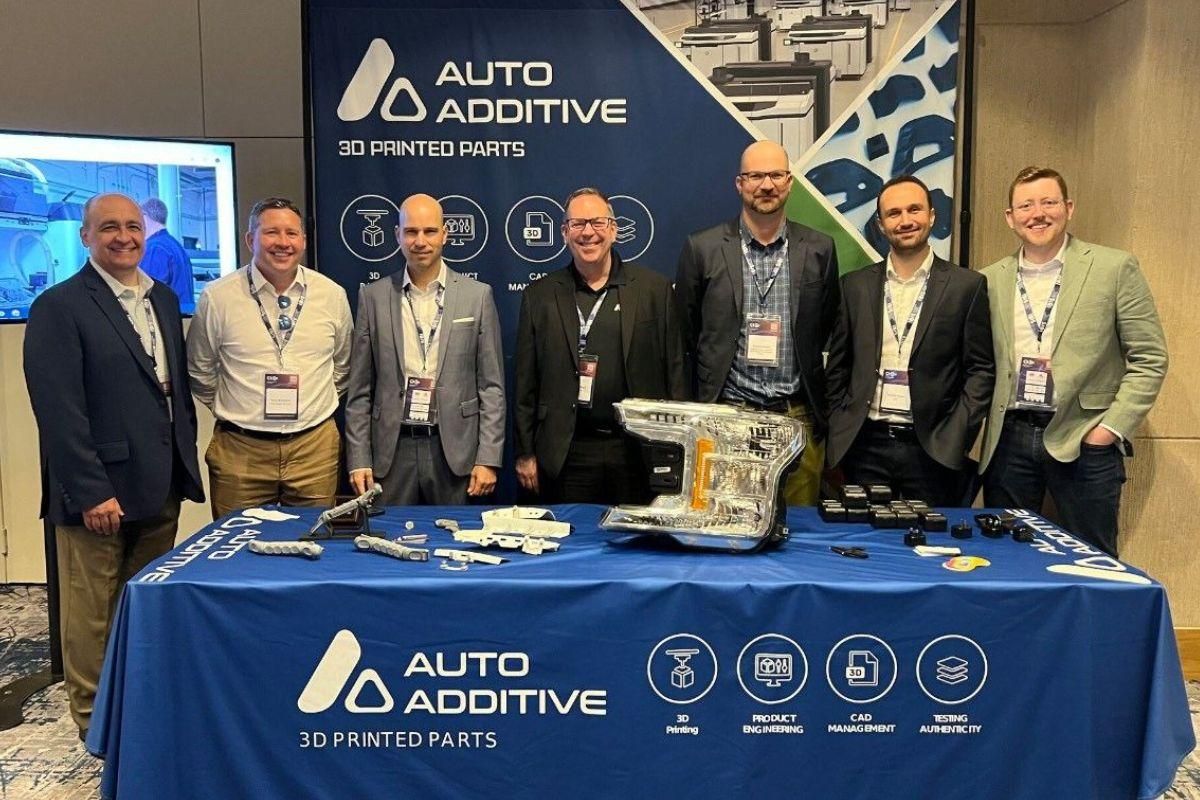Since launching this year, Auto Additive has positioned itself as a collision repair specialist provider of high-quality, OEM-grade 3D-printed parts, tools and jigs for the automotive repair and customization industry. The company is working with several launch clients in the collision industry from headlight reconditioners, product suppliers and collision repairers to understand the opportunity in these sectors and how 3D printing can help the repair process.
“We have made great progress and already co-developed a number of patented tools and jigs for our clients and are working on some inspiring and ground-breaking solutions that will help transform sectors of auto repair, services and additive manufacturing,” said Harold Sears, head of Auto Additive’s Strategic Advisory Council.
 Harold Sears.
Harold Sears.
The company’s services include 3D scanning, product engineering, testing and CAD (digital parts) supply chain management.
The company is in the process of setting up the digital additive manufacturing infrastructure, in the form of “Digital Rails” which will allow any provider with a digital catalog to print with Auto Additive worldwide on demand and with confidence.
“This enables us to provide an industry-first solution and print customer parts on demand anywhere in the world through transparent, blockchain-driven software, providing ultimate client IP protection,” said Sears.
“Through collaborations with industry leaders like HP 3D Printing, GKN Forcast 3D and Assembrix, Auto Additive can deliver advanced, sustainable and reliable 3D printing solutions tailored to the needs of the automotive sector,” said Diana Trajcevska, the company’s director of digital innovation.
The goal is to service and open new opportunities for a broader range of clientele, such as OEMs, aftermarket suppliers, collision groups and specialty collision supply businesses.
“We are not a direct parts or product supplier; we provide our services to current parts, tools and consumable suppliers and work with them to solve their and the industry's needs” through additive innovation, explained Trajcevska.
Auto Additive’s strategic advisory council, led by industry veteran Sears and featuring representatives from GM, HP, I-CAR, Boyd Group, Tesla, SEM / PPG and more, ensures the company stays at the cutting edge of technological and industry advancements.
“We work together to determine best practices and pathways for utilizing 3D printing in the collision repair process and parts supply that will benefit everyone involved,” said Mario Dimovski, a member of the strategic advisory council.
Trajcevska shared two projects that Auto Additive has collaborated on.
Auto Additive collaborated with 4Plastics to develop the Plastic Repair Push Tool using advanced 3D printing technology. Trajcevska said the tool addresses challenges in repairing impacts on bumper covers by offering a precise, efficient solution.
“The tool's innovative design and durable material significantly improve repair quality and reduce labor time and costs,” he noted.
To tackle the issue of damaged or missing tabs on headlights, Auto Additive, in collaboration with Headlights.com and Forcast 3D, introduced 3D printed weld-on PP tabs.
“These tabs can be welded directly onto headlights, matching the original OEM material's durability and reducing the need for costly replacements,” explained Trajcevska. “This innovation will enable repair shops to restore more headlights with broken tabs efficiently, cutting costs and minimizing environmental impact by reducing landfill waste.”
“It's important to understand that Auto Additive is not doing anything new,” said Sears. “We are playing the role of a fast follower, bridging the gap of 3D printing between vehicle OEMs who are 3D printing parts now and various other industries that have already adopted this technology for manufacturing or replacement parts.”
These industries are rapidly increasing and include the U.S. Navy, defense, rail, aviation, agriculture, aerospace, appliances and sporting goods manufacturers.
“Our mission is to bring the same quality and materials used by OEMs in their 3D printing of parts for new cars in the manufacturing process to the automotive repair and replacement market,” said Sears.
“We also need to consider that Auto Additive’s solutions will have an enormous impact on the environment and sustainability,” added Trajcevska. “This is a core value at Auto Additive.”
By using additive manufacturing processes, Auto Additive hopes to enable customers and the industry to reduce waste by diverting previously non-repairable parts from landfills and lowering the carbon footprint associated with traditional manufacturing methods.
Auto Additive has also recently become a member AMGTA (Additive Manufacturing Green Trade Association), joining a string of global 3D printing companies promoting sustainability in 3D printing.
“This commitment to sustainability is reflected in our mission and it will form one of our key reporting metrics, providing clients with waste diversion and carbon offset reports within our service offerings,” concluded Trajcevska.















Stacey Phillips Ronak